Follow us as we tell you of life in the eco-commune Zappatori senza Padrone, in the Apennines between Tuscany and Romagna, settled in the Seventies and never abandoned.
Our arrival at the eco commune
The stone house stood in the middle of a clearing, surrounded by hills and woods on all sides. It looked small and unassuming. In front of it, a couple of haystacks, some rows of vegetables and a makeshift greenhouse. You could hear the dangle of cowbells and the faint murmur of a river, bubbling below. A young man appeared at one of the house’s windows, welcoming us in. Lunch is almost ready, he said.

We walked into the house and climbed to the first floor, to the living room-cum-kitchen that served as the main room. It was cosy. But not that ‘cosy’ that is codename for deary. It was cosy indeed, with a wood stove and a fireplace, and a long wood table running through the middle. Bunches of herbs, strings of onion and garlic hung from the rooftop beams. The walls were decorated with psychedelic wallpaintings and postcards; an array of knickknacks were laid out on shelves and cabinets around the room.
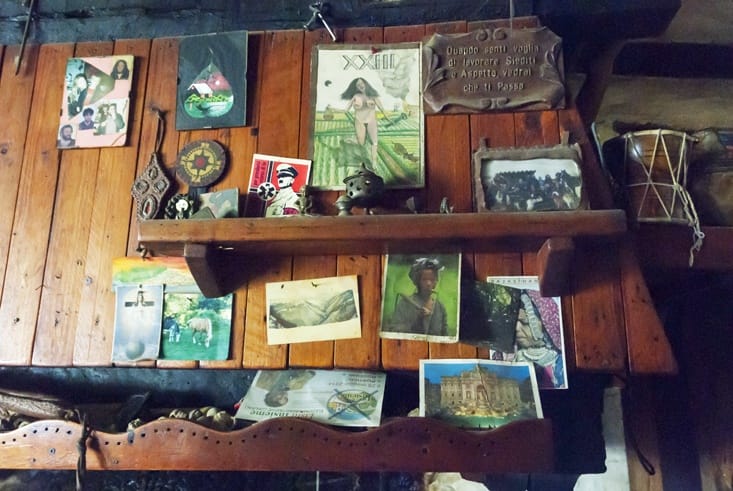
In the room sat two young women, thick Tuscan accent with their drawn-in c’s, and two men, one teenage one older, talking the musical Romagna talk with hissing z’s. The right type of dwellers for this borderland, between northern and central Italy. It was the eco-commune of Trafossi, which with Pianbaruccioli a couple of kilometers above is the abode of the Zappatori Senza Padrone (Diggers Without Masters), a hippie commune that settled in the Romagna-Toscana Apennines back in 1977.
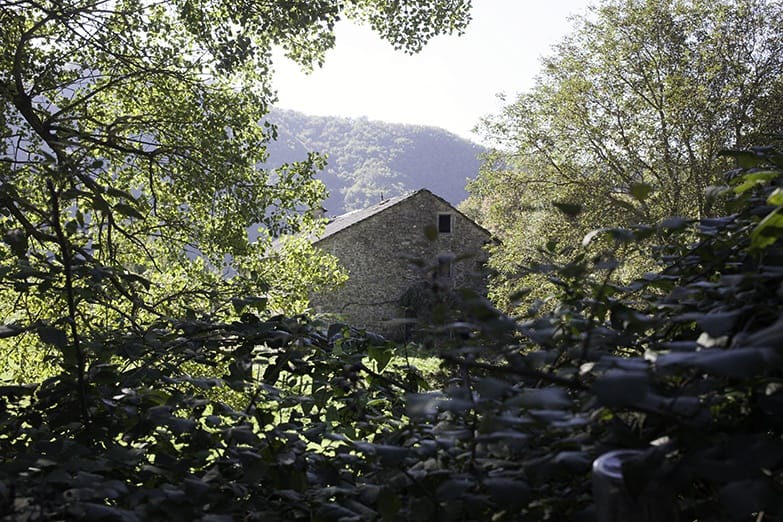
Eco communes and my family
I have always been fascinated by eco-communes. My uncles lived in several communes in the Seventies; one even raised his children in one. My father, the most establishment-like of the three, has always fancied them as kind of weirdos. But for me, the idea of living a life dictated by the rhythms of nature, far from towns big and small, far from the rat-race and the rampant individualism, has always had a certain appeal.
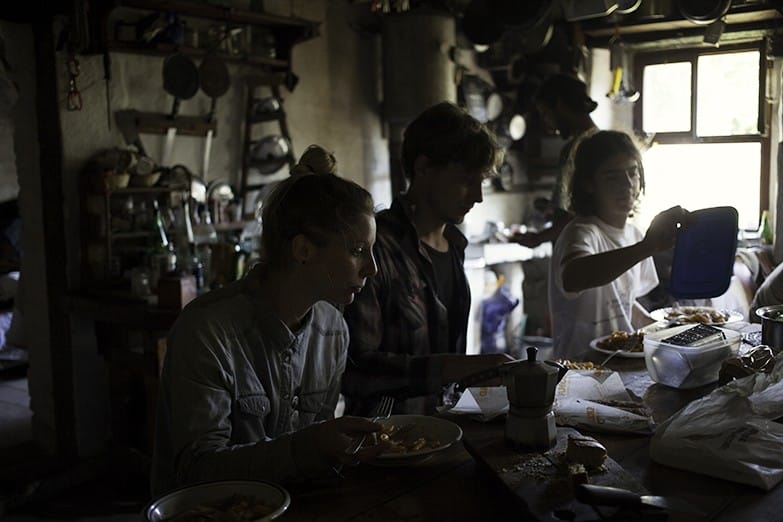
The teenage boy offered to show us around. Timidly, we asked if we could take some photos. This is their home, after all. Not a tourist attraction.
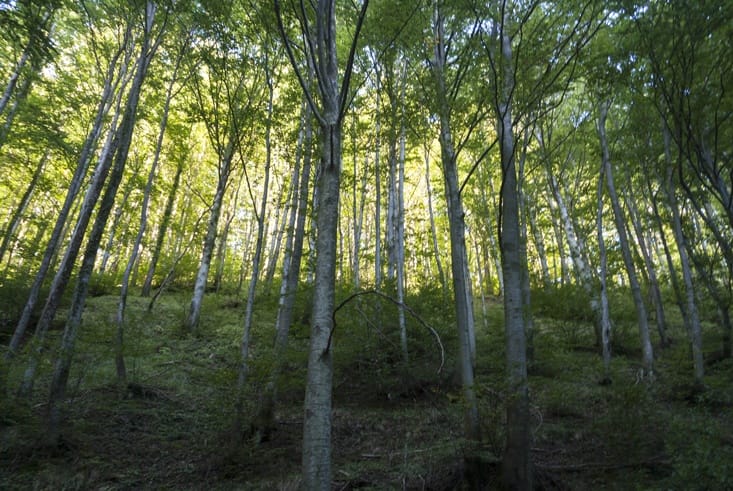
“Just grab a bed, whichever one you like. The only thing we own here are our clothes and bed sheets. The rest is everyone’s”, he said, showing us the attic where a dozen bedrolls were laid out. “You’ll stay, at least a couple of days, right?”
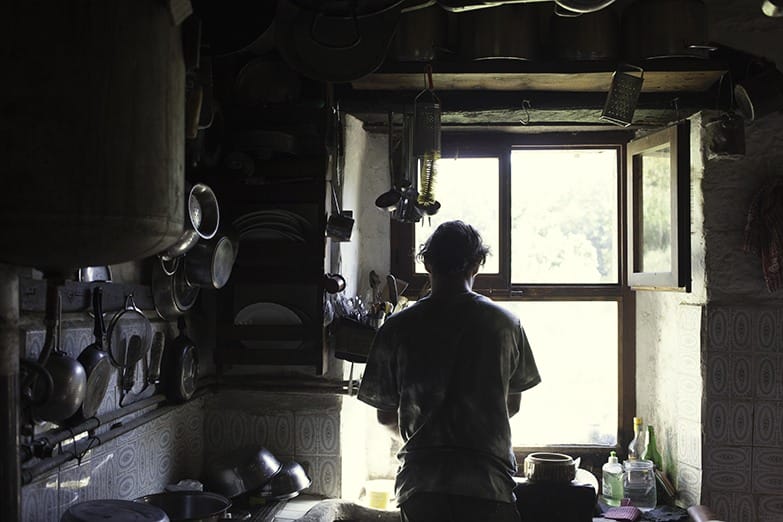
Life at the eco commune
The boy took us to the garden and showed us the rows of vegetables; cabbages, spinach and kale, and plump tomatoes in the greenhouse. He showed us the rabbits they raise and then sell in the markets of Forlì and Faenza, holding a big white one with pride. Then he took us to the stables where a cow and her calf live; we couldn’t see them as they were out grazing, but we could hear their bells clanging.
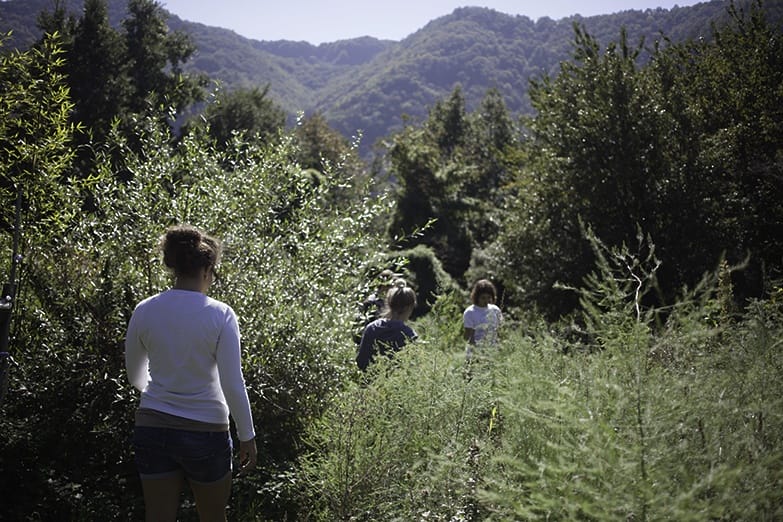
Back into the house, we learnt of their lifestyle and of their community. Two of the original founders of the commune still lived in the area, in the other house a couple of kilometers above. They started Zappatori Senza Padrone in the Seventies. Fancying themselves as campesinos, the original group of founders settled a valley that had been uninhabited for a century, naming creeks and ponds, ridges and hills, restoring the shells of old farmhouses and digging up the stony soil to make it cultivable.
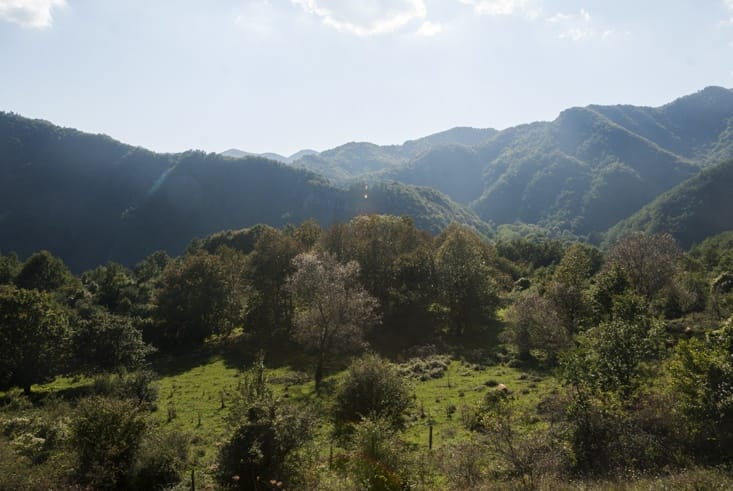
Many have since moved on, to other communes in Spain and Mexico or back to the towns big and small where they came from. Many, many more have passed through, and the place was never abandoned in thirty-seven years. Some faded pictures show the original founders, long-haired and scraggly bearded, wearing ponchos and long skirts.
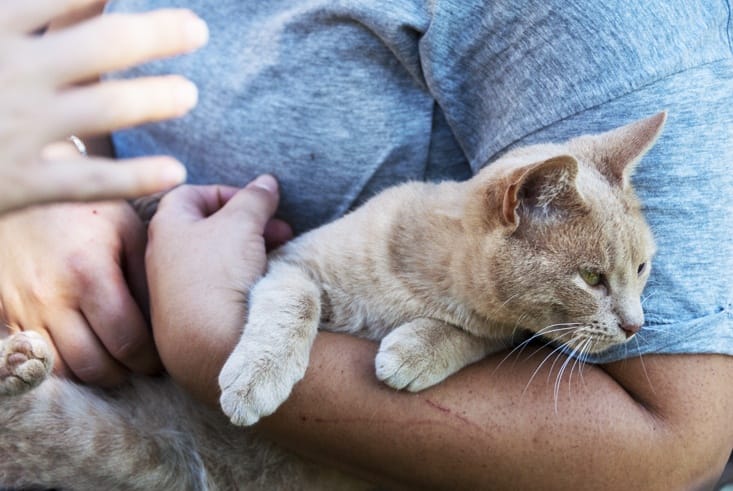
They encountered both help and animosity from the neighbouring villagers. Some, happy to see the valley settled once again, helped them out with farm work and showed them the location of underground wells. Others saw their free love and occasional spliff or two as evidence of godlessness and crossed themselves as commune-dwellers went past their houses, in their occasional forays to the villages.
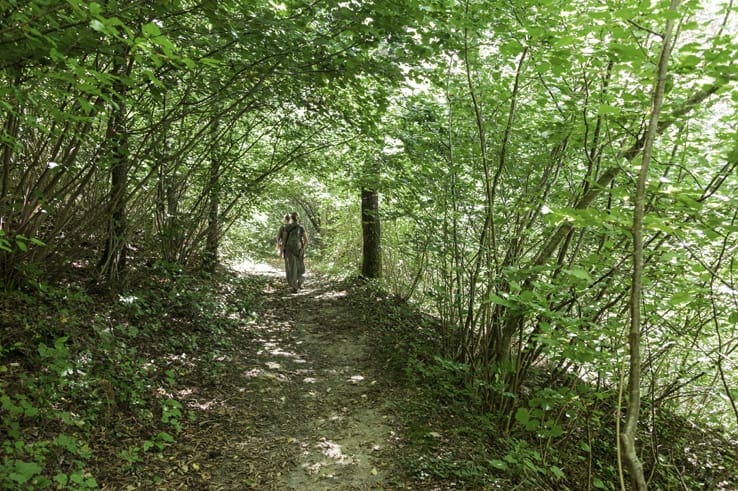
Nowadays, life at Trafossi and Pianbaruccioli continues. Little or no money is exchanged. They barter their animals and products for things like pasta and rice, and live in the stone house with no electricity or running water. We visited on a sunny day in September, when the sun still shone with the full intensity of summer. I tried to imagine a blustery January day, with snow falling and sharp wind blowing from the mountains, and suddenly life didn’t seem all that romantic.
Yet, the boy couldn’t contemplate living in Milan. “How can you? With all that noise, and people, and concrete?”
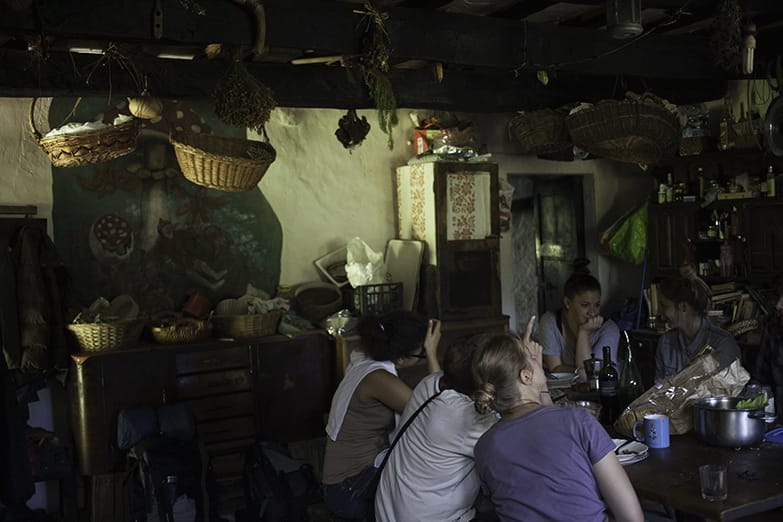
We shared a delicious lunch of pasta with tomato sauce, bacon and cheese, and some wine and sausages we had with us. When we got up to continue our walk, the boy couldn’t believe it. “What, seriously? You’re off? Do stay, please, at least a couple of days.” I honestly wished I could. “Oh well, at least come back and see us again, next time you’re around”, he added, before showing us the way to Pianbaruccioli and to the Acquacheta Fountain, mentioned in Dante’s Divine Comedy.
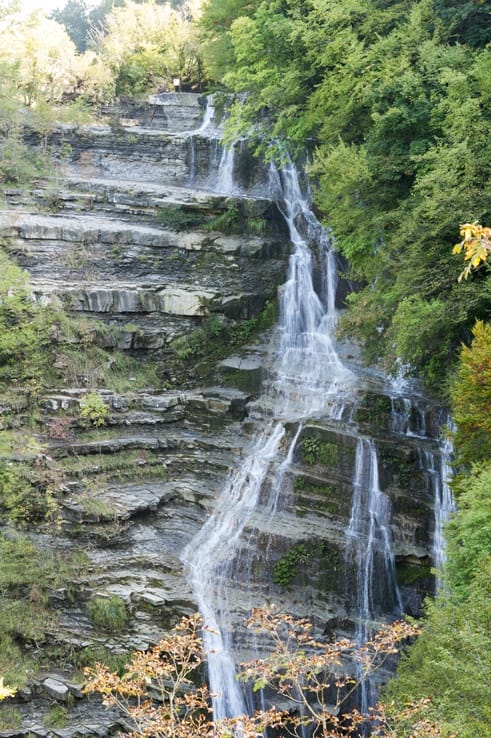
I felt privileged of having had the chance to share a meal with the Zappatori Senza Padrone. They are the living example that counterculture didn’t end with the Seventies, that a low impact life in communion with the environment can be achieved.
In that valley of the Romagna-Toscana Apennines, the belief that another world is possible, is alive and ticking.

As you read in this post, the Zappatori Senza Padrone are happy to receive visitors, especially if they are willing to share their life for a few days or weeks. However, they are not a tourist attraction and should not be treated as such.
Both eco communes can only be reached on foot; it is essential to go with someone who knows the territory well as paths are not well marked.

This is so incredibly interesting! I would love to hear all of their stories about living in the eco-commune. What a different way of living. I couldn’t imagine living without electricity or many of our modern comforts! Just as they couldn’t imagine living in a noisy city.
Looks like a fun trip wit a bit of everything!
Neat experience and some great insight. I love that he was so friendly and kind in welcoming you and wanting you to stay. I’m also a big fan of all the animals they have around- that would be a big ‘happy factor’ for me 🙂
This sounds awesome. My sister and I have always wanted to stay in a commune for a while, when she got married she bought a home bigger than she needed so people could stay as they needed, the beds are always made up 🙂 I think they’re still considering community living 🙂
This place is amazing and I have to note it down for our next visit to Italy. I love these kind of experiences when you get to see how the local life is and having the opportunity to immerse yourself into it. If we decide to gothere I’ll make sure to email you 😉
Beautiful article. I’ve lived in a commune for 6 months in the US, this post really grabbed my heart. One of my plans is to visit Eco-communes along the way, from Lisbon to Turkey with my beautiful Eurail pass.
Hope our paths cross along the way 🙂
Electricity I think I could live without but I am not sure about the lack of running water. I do however, love the idea of this simple life without the trappings of modern day living that so many people are caught up in. Maybe a comprise between this and city living is what I am searching for. When we return to Italy, maybe we need to visit for ourselves so that we can experience the peace and serenity that comes with respecting the beauty around us.
Lovely! I’m not sure if I could live like that because even though I love the outdoors, I am also a girl who likes modern ways of communication but I totally admire people who can go back to nature and live life it’s purest way…
That looks incredible! Thanks for sharing 🙂
Thank you, it was an amazing experience!